All the practicality of a tablet and usefulness of a notebook… have you ever wondered how amazing such a device could be? Then you’re not alone. There’s an emerging trend in electronics development for bridging the gap between both worlds. And as we step in 2013, some interesting gadgets have been spawned, which are well worth looking it.
For your easy reference, this article overviews the six most attractive notebook/tablet hybrids now available on the market. Some of these are quite ingenious, so if you haven’t been paying attention to the developments in the area, here goes a quick summary of the most interesting concepts that surfaced so far.
Keyboard Dock: Transformer Prime Infinity
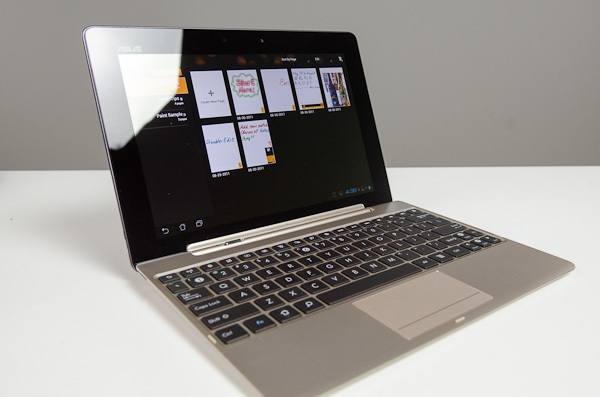
Android 4; 10,1″ screen (1920×1200); 1.6Ghz Nvidia Tegra 3; 64GB SSD; 1GB RAM; 14 hours autonomy; 1.2 + 1.2 (dock) lbs; $700
ASUS introduced one of the earliest notebook/tablet combos with the Transformer Prime, now available in the “Infinity” model. This model relies on the keyboard dock system, where the screen operates as a stand-alone tablet, with the keyboard attaching to add typing and trackpad capabilities as well as extending the battery life. Many other companies have developed similar concepts, but in our opinion the Transformer Prime remains the best offering in the keyboard dock niche.
Keyboard Cover: Microsoft Surface
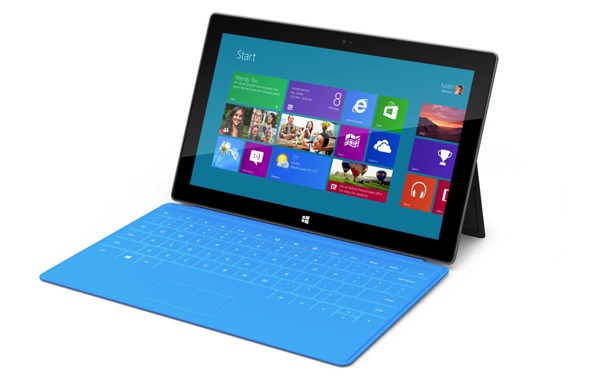 Windows 8; 10.6″ (1366×768); 1.60 Ghz Tegra 3; 64GB SSD; 2GB RAM; 8 hours battery; 2 lbs; $750
Windows 8; 10.6″ (1366×768); 1.60 Ghz Tegra 3; 64GB SSD; 2GB RAM; 8 hours battery; 2 lbs; $750
Developed specifically as a showcase for the capabilities of Windows 8 as a mobile OS, the Microsoft Surface is meant to showcase the usefulness and aspirations of the latest operating system from the software giant. The Surface is more akin to an augmented tablet where the cover doubles as a keyboard, but it does work adequately as a laptop replacement. The thin keyboard takes some getting used to, but it is actually a decent alternative as far as portability goes.
Double Screen: Asus Taichi
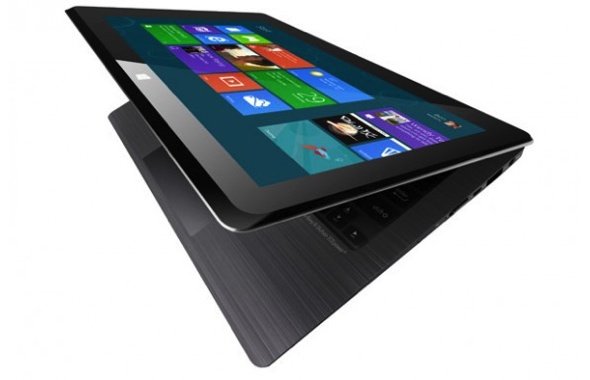 Windows 8; 11.6” (1920×1080); i7 processor; 256GB SSD; 4GB RAM; 5 hours autonomy; 2.7 lbs; $1,600
Windows 8; 11.6” (1920×1080); i7 processor; 256GB SSD; 4GB RAM; 5 hours autonomy; 2.7 lbs; $1,600
This is a peculiar and notably high-priced approach, but it should be quite useful for many professionals. With the Asus Taichi you get an Ultrabook with an additional screen on the lid of the device. Using this set-up, you can fold the Taichi and use it as a tablet, or keep it open to show people sitting across from you what you’re doing. The secondary screen can mirror the main screen, or work as a desktop extentsion, which can be particularly useful when doing presentations.
Sliding Keyboard: MSI Slider S20
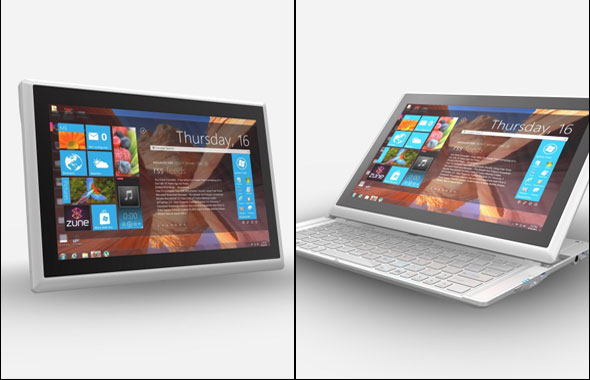
Windows 8; 11.6″ inch screen (1920 x 1080); i5 Processor; 128GB SSD; 8GB RAM; 9 hours battery; 2.2 lbs; $1,200
The sliding keyboard concept was first introduced in the ASUS Eee Pad Slider, but MSI has actually refined it with the MSI Slider. Here, you get an oversized tablet with a built-in keyboard that slides from below the screen when you need to use them. This is ideal for those who want the versatility of a tablet with the added usefulness of an unobtrusive full-sized keyboard.
Flip-Screen: Dell XPS 12
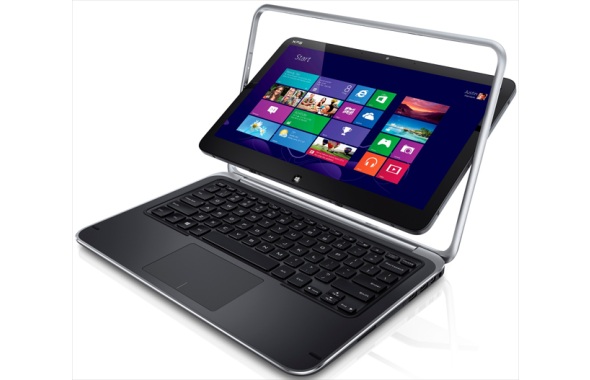
Windows 8; 12″ (1920×1080); 1.7 Ghz i5; 4GB RAM; 128GB SSD; 6 hours battery; 3.4 lbs; $1,200 (higher priced variants with better processor and more storage are available)
Here is arguably one of the most extravagant-looking combo concepts to surface so far. The Dell XPS looks very much like a regular Ultra-Mobile Notebook, until you realize how the lit features an outer frame that allows spinning the screen around itself – this allowing to convert the set-up from notebook to oversized tablet mode.
Fold Back: Lenovo IdeaPad Yoga
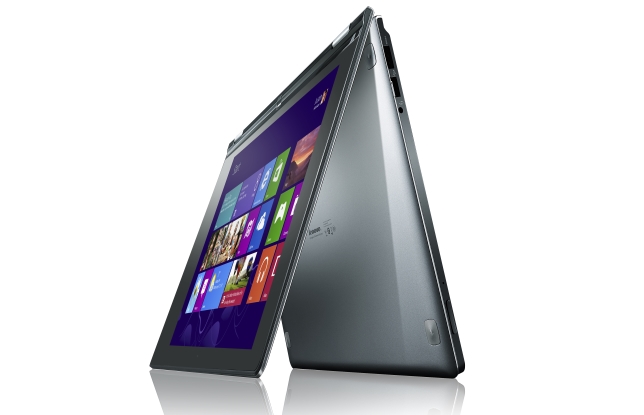
Windows 8; 13″ (1980X1020); 1.7 Ghz i5; 128 GB SSD; 4GB RAM; seven hours battery; 3.5 lbs; $1,200
As far as elegant simplicity goes, this by far our favorite solution; rather than relying on complex gimmicks to allow reorienting the screen to fashion a tablet look-alike, the Yoga simply folds back on itself by a complete 180, thus allowing you to get the keyboard and touchpad out of the way (and temporarily deactivated) with a simple and natural gesture.
What do you think, do any of these concepts appeal to you? Make sure to let us know your thoughts by writing in your comments below.
